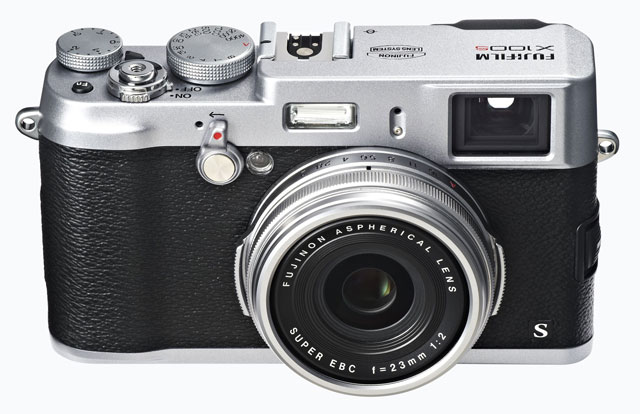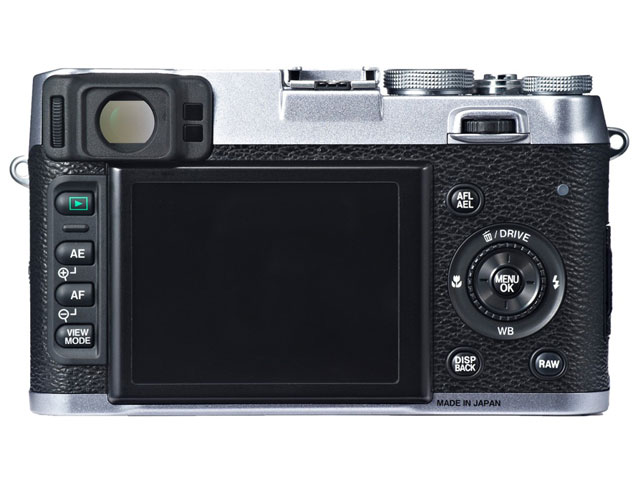
If you’re the retiring sort, the X100S probably isn’t the camera for you — because it’s going to get you a whole lot of attention. Camera enthusiasts will want to interrogate you about it, elderly folk will enthuse about your decision to use inherited gear, and amateurs will ask you where the film goes.
Despite looking like a rangefinder from the mid-1960s, Fujifilm’s X100S is in fact one of the shining lights of the high-end, fixed-lens, mirrorless camera market, a category that didn’t even exist a decade ago.
The follow-up to last year’s X100, the X100S has a die-cast magnesium top and tail with textured faux-leather wrapped around it. The top includes two dials — one for exposure compensation and the other to set shutter speed — as well as the power switch and shutter release it surrounds, and a flash hotshoe.
In a move that will delight older camera users, the X100S shutter release includes a threaded hole so that it can be used with a traditional screw-in cable release. It’s that sort of attention to detail and homage to heritage that makes the X100S such a desirable device, not only as a camera, but as an objet d’art.
With the possible exception of the hybrid viewfinder switch on the face of the camera, every switch and dial feels befitting of a premium device. The shutter speed dial, which offers bulb and timer settings along with shutter speeds between 1/4 000 of a second and four seconds, clicks satisfyingly between settings as does the exposure compensation dial.
There’s also a manual aperture ring that surrounds the lens and sits flush with the camera’s body behind the focus ring. Unfortunately, it allows only for adjustments in full-stop increments, but there’s a menu setting to allow for intermediate apertures.

The X100S has a 23mm fixed lens that offers an aperture of f2.0 and constant manual override for focusing. As one would expect, the lens is superb across the aperture range, with great corner-to-corner sharpness and is highly resistant to chromatic aberration (the coloured fringe sometimes seen in high-contrast situations).
Fuji has also included a three-stop neutral density (ND) filter in the lens, making it possible to shoot with wide apertures — and thus reduce depth of field — even in bright(ish) light.
Undoubtedly the most innovative feature of the X100S is its two-in-one hybrid viewfinder. A conventional optical rangefinder viewfinder one minute — complete with the parallax errors that brings with it — and an electronic viewfinder the next, the X100S offers all sorts of information overlays in both views.
The actual capturing of images falls to a 16,3-megapixel CMOS II sensor. That’s a bigger sensor than most cameras in this range and the sort found in most entry- and mid-level digital SLRs. It’s little surprise then that the X100S produces useable images all the way up to 6 400 ISO.
The 2,8-inch 460 000-pixel LCD is crisp and bright but doesn’t reticulate, despite the raised bezel that suggests it might at first glance. The screen is also great if you’re planning to use the X100S to shoot video — it captures video at 1080p — but videographers are by no means this camera’s target market.
With a recommended retail price of R12 999, the X100S isn’t for the casual holiday photo taker. But its fixed lens may also preclude it from attracting the loyalty of the working professional.
That’s not to say it can’t replace a DSLR — in terms of image quality, it almost certainly can, assuming you don’t shoot sport, wildlife or anything else that requires a range of focal lengths — but professional photographers have to contend with one major obstacle when it comes to compact or mid-sized cameras: public perception.
A friend recently traded-in his high-end DSLR for Olympus’s superb OMD only to swap it for a DSLR again after too many doubting looks at professional shoots.
In the end, it’s difficult to figure out who the X100S is for beyond the high-end, deep-pocketed hobbyist. It’s beautiful, as are its results, but it’s an extremely expensive camera, especially given that any zooming has to be done with your feet.
Nevertheless, if you like the attention of strangers, this is the camera for you. Those who recognise the X100S will almost certainly enthuse about it and could be forgiven for failing to hide their envy. The rest will probably want to know where the spool of film is meant to go. — (c) 2013 NewsCentral Media

